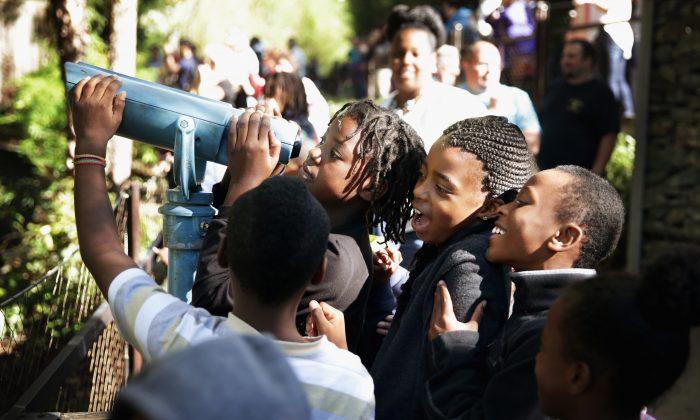The Washington D.C. (District) charter school scorecard shows improvements in a number of areas, truancy, suspensions, and math and reading scores.
Truancy by students, a trend that school officials wish to eradicate in the Washington D.C. public school system, including charter schools, has improved.
During the 2013 school year the Districts charter schools accounted for 21 percent of the 2,482 truant students, according to recent testimony by Brenda Donald, Director of the Child and Family Services Agency during a hearing before the Council of the District.
The attendance rate for D.C.’s charter school was 91 percent for the 2013 school year, which is an improvement from the 89 percent of the prior school year, according to a D.C. Public Charter School Board (PCSB) powerpoint presentation.
Less Misconduct
Charter schools deal with truancy and student misconduct just like traditional public schools. During 2013, 0.5 percent of charter school students were expelled, a decrease of 0.2 percent over the prior year.
Overall, 186 students were expelled during the 2013 school year, down from 227 students during the 2012 school year, according to a PCSB powerpoint, published by the Washington Post.
Above Average Scores
A comparison between traditional and charter schools in the District showed that charter school students scored higher in math and reading during the last school year.
The District’s charter school students “performed well above the state average in math and reading on the District of Columbia Comprehensive Assessment System (DC CAS) tests,” according to a report released in mid-2013 by PCSB.
Scores were up by 3.9 percent in math and reading during the last school year and were higher than the District’s proficiency average.
English language learners, economically disadvantaged, special education, as well as racial and ethnic subgroups, saw improvement in their reading and math skills.
“What we see in these result is Charter schools helping to close the achievement gap in DC,” stated John H. McKoy, chair of the PCSB.
Student Population
The total D.C. school population for the 2013 school year amounted to 45,557 students, including exchange and evening students.
Charter schools enrolled 36,823 students for the 2014 school year, which is approximately 44 percent of the Districts total school population. Enrollment for charter schools increased by 6.2 percent over the 2013 school year, according to PCSB.
Scott Pearson, executive director of PCSB, said in a recent press release, “A strength of charter schools is to offer a diverse array of programs, choices and options ... These latest enrollment figures show that parents and students are taking advantage of these options.”
History
It has been about seventeen years since in 1996, since an amendment to the Washington D.C. School Reform Act of 1995 established PCSB. However, the D.C. Board of Education (BOE) retained oversight over the Districts charter schools.
In 2007, the former mayor of D.C., Adrian Fenty, assumed responsibility over the traditional D.C. public school system and assigned oversight of D.C.’s charter school to PCSB.
The Nation’s Charter Schools
According to the National Education Association (NEA), “Charter schools are publicly funded elementary or secondary schools that have been freed from some of the rules, regulations, and statutes that apply to other public schools.”
Charter schools offer new and creative teaching methods. Traditional public schools may adopt these methods if they were successful in improving student scores.
Charter school educational authorities lay down specific results, which are defined in the schools charter. The authorities that granted the charter reviews it every three to five years for compliance and the charter may be revoked for non-compliance.
The first two charter schools were established in Minnesota in 1991. By 2004, there were 3,000 charter schools, enrolling 750,000 students, in 37 states, D.C. and Puerto Rico according to the NEA.
According to data from the Institute of Education Sciences (IES), 5.34 percent of all U.S. schools are charter schools, which are a small portion of all U.S. schools.
National Scorecard
The curricular freedom enjoyed by charters schools does not always translate into improved test scores. Between 1991 and 2004, over 400 charter schools were closed nationwide because their performance was not up to par.
In the Final Nation’s Report Card, published in 2004, the National Assessment Governing Board (NAGB) stated that overall the achievement scores of students from charter schools were lower than those of students in traditional schools.
However, according to a 2013 National Charter School Study by Stanford University, “Charter schools now advance the learning gains of their students’ more than traditional public schools in reading.”
Additionally, charter school students math skills are on par with students from traditional public schools.
The Stanford study shows that disadvantaged students, such as those from impoverished homes, special education students, English language learners and black students benefit the most from attending a charter school.




